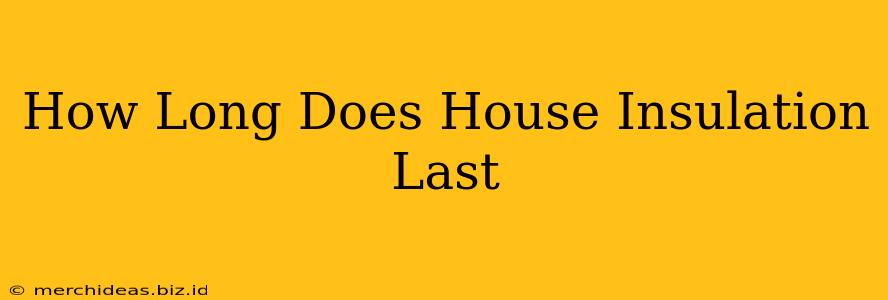Thinking about your home's insulation? Knowing how long it lasts is crucial for budgeting and maintaining energy efficiency. This guide dives deep into the lifespan of various insulation types, factors affecting longevity, and signs it's time for a replacement.
Insulation Lifespan: A Material Breakdown
The lifespan of your home insulation significantly depends on the material used. Let's explore some common types:
Fiberglass Insulation:
- Typical Lifespan: 50-100 years. Fiberglass batts and rolls are incredibly durable, offering a long service life.
- Factors Affecting Lifespan: Proper installation is key. Moisture intrusion is the biggest enemy, potentially leading to mold growth and reduced effectiveness.
- Signs of Degradation: Sagging, water damage, visible mold or mildew.
Cellulose Insulation:
- Typical Lifespan: 50-100 years. Cellulose, made from recycled paper, is also remarkably long-lasting.
- Factors Affecting Lifespan: Similar to fiberglass, moisture is a significant concern. Proper ventilation is crucial.
- Signs of Degradation: Settlements, musty odor, water staining.
Spray Foam Insulation:
- Typical Lifespan: 50-100 years. Open-cell spray foam tends to last a bit shorter (50+ years) than closed-cell (80+ years) due to its higher moisture absorption.
- Factors Affecting Lifespan: While incredibly durable, improper application can reduce lifespan. UV exposure can degrade open-cell foam over time.
- Signs of Degradation: Cracking, significant settling, yellowing (open-cell).
Mineral Wool Insulation:
- Typical Lifespan: 80-100 years. Mineral wool (rock wool and slag wool) is exceptionally durable and fire-resistant.
- Factors Affecting Lifespan: Similar to other insulations, moisture is a key factor. It's generally resistant to pests and rot.
- Signs of Degradation: Compression, significant settling, visible water damage.
Factors Affecting Insulation Lifespan
Beyond the material itself, several factors influence how long your insulation remains effective:
- Installation Quality: Proper installation is paramount. Air gaps, uneven application, and moisture intrusion can drastically shorten lifespan.
- Moisture Control: Preventing moisture is crucial for all insulation types. This includes proper ventilation, vapor barriers, and addressing any leaks or water damage.
- Pest Control: Some insulation types (e.g., cellulose) can attract pests. Addressing pest infestations promptly can protect your insulation.
- Climate Conditions: Extreme temperatures and humidity can affect insulation performance and longevity over time.
When to Replace Your Insulation?
While many insulation types last decades, there are several telltale signs it's time for a replacement:
- High Energy Bills: Noticeably higher energy costs may indicate insufficient insulation.
- Uneven Temperatures: Rooms feeling consistently too hot or cold suggest issues with insulation.
- Visible Damage: Sagging, water damage, mold, or pest infestations require attention.
- Old Insulation: If your home's insulation is several decades old, it's wise to have it inspected for performance and condition.
Conclusion: Prioritizing Insulation Longevity
Investing in quality insulation is a significant home improvement that pays off in energy savings and comfort for many years. By understanding the lifespan of different insulation types and taking steps to protect it, you can maximize its effectiveness and longevity, contributing to a more energy-efficient and comfortable home for decades to come. Regular inspections and proactive maintenance are your best allies in ensuring your insulation continues to perform optimally.
